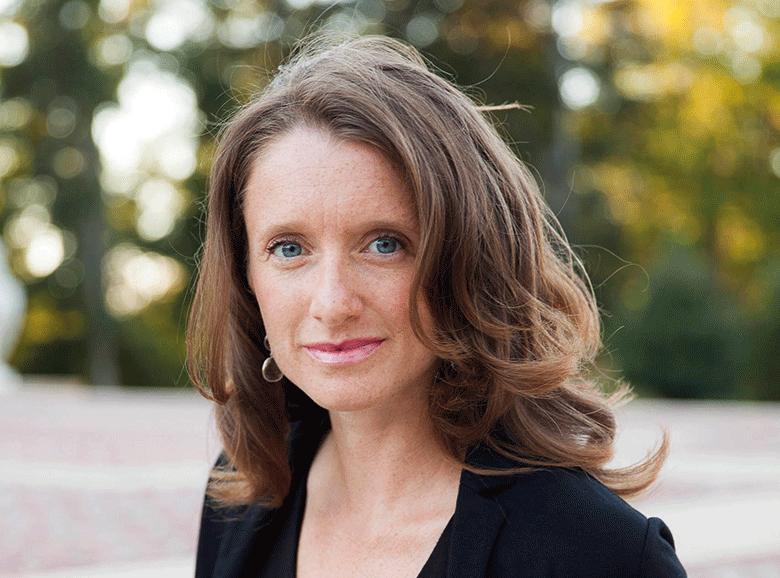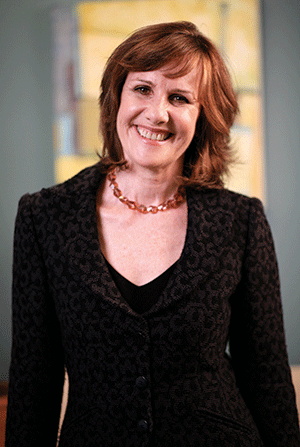|
PIONEERS |
|
|
|
It feels like the financial industry is having its equivalent of the Time’s Up movement. Gender pay disparity has now found a landing place in Wall Street and the City of London.
In the UK in April, more than 10,000 large firms had to provide details of their gender pay gap under new reporting rules. That revealed what 47% of its workforce suspected: that three-quarters of UK corporates with more than 250 employees pay men more than they pay women.
Financial institutions were the second-worst offenders as an industry, just behind construction. Among those, JPMorgan and Goldman Sachs had the biggest pay gap among the big US banks in the UK, with men being paid 54% and 56% more than women respectively. At HSBC, the UK’s biggest bank, the mean pay gap was 59%.
In the US, the largest banks have also been pressured to reveal their gender pay gap there, not through government intervention but rather under pressure from within – and from active shareholders such as Arjuna Capital. In March, JPMorgan and Wells Fargo became the last large US banks to agree to disclose their pay gap, causing Arjuna to withdraw its shareholder proposals at the firms.
A movement has clearly started, but it is one that goes beyond disclosing a pay gap. Nearly every part of the financial industry needs to be transformed.
If anyone deserves credit for nudging US banks along in the process of disclosing their pay gaps, then it is Natasha Lamb, managing partner at Arjuna Capital. Her firm made shareholder filings for pay gap disclosure at nine US financial institutions. At the time of writing, eight have agreed to reveal the numbers.
But Lamb says pay gap disclosure is really just the beginning.
“There has been a lot of lip service to diversity paid by banks,” she says. “And there have also been efforts such as affinity groups and programmes that aim to increase representation of women, but now we’ve entered a new phase where companies are understanding they need to have greater accountability. The pay gap has always been the clear example of structural inequities on Wall Street – we just could never pin that gap down. Now we are getting there, to some extent. Getting a global sense would be helpful.”
In addition to getting global data, she says the next step is to tackle female representation in senior roles. UK data, for example, only reported the median pay gap; any disparity mostly seemed to indicate that women are not in higher paid executive jobs.

Natasha Lamb, managing partner at Arjuna Capital
“Now we need to look at both the median pay gap and pay gap on comparable positions,” says Lamb, “so we can track how that changes over time. Why aren’t more women in senior roles?”
Lamb criticizes financial institutions that are celebrating commitments to having 30% female representation on boards: “The obvious question is why aren’t we saying 50% to represent the demographic of our society? Analysis shows the pay gap is not going to close for 30 years. We really need to do more to speed this up.”
Transparency
Barbara Leveel is global head of diversity and HR corporate social responsibility at BNP Paribas in Paris. In France, companies have had to disclose their pay gaps for several years. That transparency has helped the bank understand better where gender disparity is occurring. Leveel agrees that it is in the senior roles that it has been the most difficult to reach a goal of equality.
It is not, as many banks used to claim, because the talent pool is low, although Leveel does point out that women are not entering higher-paying roles early on.
Unconscious bias, where interviewers have been found to hire predominantly male employees, has instead been found to be a frequent culprit in adding to the gender gap. In the case of BNP Paribas, financial incentives have been used to encourage more diverse hiring. Indeed, 20% of the Group Sustainability and Incentive Scheme (a medium-term incentive plan for more than 6,300 key employees of the group) is related to the BNP Paribas’ corporate and social responsibility performance, including diversity. Leveel adds that providing managers with data has also been helpful.
“At the annual compensation review,” she says, “managers will see how they have distributed their pay increases – whether they awarded male team members a €3,000 pay rise and their female team members €1,000 – data they may not have realized over the course of a year. That kind of insight helps them see their own unconscious biases and then self-correct.”
Some banks are also enforcing a balanced interview panel.
Small changes such as these make large impacts.
Tracey Warson, co-chair of Citi Women and head of Citi Private Bank for North America, points to her firm’s successes.
“We introduced diverse interviewing committees, as well as a requirement to post internally for roles of director level and above. Today, 23 of the 96 countries where we have a presence are overseen by women. It’s progress – several years ago it was just five.”
Warson also adds that what arose from these hiring initiatives was an awareness that women were not applying for the senior positions: “We found that if a man is 20% qualified for a position, he raises his hand, but women think they need to be 100% qualified. We have introduced specific training for women to address the difference in behaviour.”
It moved the needle. Women who attended the training started to apply for more senior roles.
For global firms, such training schemes need to be adapted for different cultures – particularly around returning to the workforce after having children. Leveel points out that in Germany, where children do not enter school until the age of six, the stigma around outsourcing child care means many women do not return to work after their first child.
“We try to support them with maternity leave, we keep in touch and help them stay motivated, and have a one-day training to prepare their return,” she says. “But in some instances, it really is us battling a culture. Having senior female role models can help.”
Decisions
It’s not just with their own internal structures and processes that banks must better understand the different needs of men and women.
 |
| Patricia Farrar-Rivas, Veris Wealth Partners |
Patricia Farrar-Rivas, is chief executive and co-founding partner of Veris Wealth Partners. “We’re looking at a future where 70% of financial decisions will be made by women,” she says. “Understanding what these women care about is hugely important.”
Many banks have introduced training for higher-paying, client-facing positions – many of which start with the most basic suggestion that they look female spouses of clients in the eye and ask female clients about their altruistic goals. It is an example that highlights the long journey still to be made.
This longstanding practice of focusing on men as financial decision-makers has led Lisa Kornick to start setting up a bank that specifically serves women and people of colour, as well as the small businesses owned by both. She was the business partner for her husband, a chef, in several large and successful restaurants in Chicago, and she found that interactions with bankers often left her feeling that she was being ignored.
“After meeting with two banks owned by men, I searched for a bank owned by a woman to see what terms she could offer for a construction loan, but I could not find one,” says Kornick.
It was then that she felt called to set up a commercial bank for women – the First Women’s Bank of Chicago – which, if chartered, will be only the 14th women-owned bank out of some 5,800 banks in the US.
It is not just tailoring service to women that is required, adds Farrar-Rivas, “but also to recognize that women may have different product requirements than men across the wealth spectrum.”
The most discussed difference is that women typically lean towards investments and products that have a positive social and environmental impact. They are also looking to support female-founded firms and companies that have gender diversity or that promote women.
“Women are asking not only where is my money going, but who is making the decisions about where my capital is going? And that has spurred a gender lens investment movement,” says Farrar-Rivas.
It is not only women that will benefit, she points out. As data continues to emerge of the positive impact increasing female productivity will have on global GDP and how companies with diverse boards that target diverse clients outperform on revenues, men are also looking to gender lens investing.
Vicious circle
A knock-on effect of this shift to viewing investments through a gender lens has been a recognition of the far smaller number of female-owned versus male-owned businesses. It is yet another part of the financial industry that needs to change if it is to claim gender equality.
It is something of a vicious circle when it comes to financing female-founded firms, says Jamie Sears, head of community affairs and corporate responsibility at UBS Wealth Management US: “If less than 6% of the venture capital decisions are made by women, then what we end up with is pattern recognition – where those running VC firms look at past successes – which they see to be male-dominated – and then base their decisions on those. It perpetuates a cycle of who is getting the money.”
On top of that, says Sears, the early-stage investment community is largely relationship based, so male-dominated networks result in more capital flowing to men.

Jamie Sears, head of community affairs and corporate responsibility at UBS Wealth Management US
“There’s an unconscious bias at work even within the earliest stages of investment that is preventing female founders from growing their firms,” says Sears.
UBS selected Rethink Impact as its first venture capital impact fund to be put on its investing platform. It is the largest US-based, impact venture capital firm with a gender lens investing in tech-driven companies. Currently, 100% of its companies have a woman on the executive team and the large majority have a female chief executive.
Jenny Abramson is the founder and managing partner of Rethink Impact.
“Venture capitalists have an important role to play in ensuring the major companies of tomorrow, long before they go public, are more diverse at the top,” she says. “While venture capitalists invest in the startups of today, some subset of these early- and growth-stage businesses will become our major tech players of the future.”
There is also a multiplier effect. Rethink Impact, for example, invested in Sallie Krawcheck’s investment advisory firm for women, Ellevest, which in turn invests in women-owned businesses, among others.
Kornick agrees that small steps are needed now: “We might not see the changes we long for now, but we will only see them if we start supporting female-owned businesses.”
The larger banks can also support this vision through their own supply chains. Currently only 1% of corporate procurements end up with female-owned firms, according to Citi.
While there is clearly a long way to go, a movement towards gender equality in finance – started by women in the industry and increasingly supported by men – is gaining momentum.
The Time’s Up for finance pioneers
Natasha Lamb
The managing partner at Arjuna Capital, on how women can take the pay gap into their own hands
“It’s not necessarily about going and asking for a raise. Pushing for transparency is the most important tactic in solving any of these inequities. I don’t believe that employers are looking to pay women less, but they are often simply unconscious about the issue and not giving it attention.
Most companies wouldn’t choose to look at uncovering the pay gap. It can be a lot of work to get to accurate data, but if employees are asking for transparency, then it’s hard for [the company] to ignore.
What we don’t want is to get into discussion about women being paid less because they are less aggressive negotiators – that simply puts blame on the victim. Yes, there are many societal reasons women don’t raise their hand more, but saying ‘women need to change’ is not the solution. The company needs to change.
So, while women need to advocate for themselves, the power lies with the employer. Whether it’s by being part of an affinity group or by bringing the issue to HR or even the chief executive’s office, we should be posing the questions: Do we know the pay gap? Are we being transparent about it? And how can we be specific about what roles that pay gap is in, and also is there a pay gap among women by race?
Let’s commit to getting as much information as we can and disclosing it so we can work through any and all inequalities.”
Patricia Farrar-Rivas
The chief executive and co-founding partner of Veris Wealth Partners, on how individuals can support diversity through their pension and investment decisions
“Every individual can help by constantly asking questions. Where are the women and people of colour in the organization that is investing my money? Do the products I am invested in or buying benefit women, girls and people of colour? Are the companies I am invested in considering women as their consumers? For example, is this pharmaceutical stock I own testing drugs on women or only men?
And if you’re not invested in a portfolio, you’ll be invested somewhere through your company pension fund or 401k. Approach your employer and ask them to include gender lens products where available – oftentimes ESG [environmental, social and governance] funds will screen for diversity too if gender lens options aren’t available.
If you are in the investment management industry, ask those making the decisions about funds to include gender lens products and ask your research team to look at diversity as part of their stock analysis.
By asking these questions, we can then move on to the ‘why’: Why aren’t there more products? Why aren’t you employing a diverse workforce? Why don’t you address women consumers, etc. Then we begin to really move the needle.”
Barbara Leveel
The global head of diversity and HR CSR at BNP Paribas, on how to ensure more women have senior roles in finance
“The challenge is not that there isn’t diversity in senior roles in general but rather an imbalance of diversity in senior roles across business lines. Women tend to have senior roles in HR, marketing, communications and corporate and social responsibility, while men tend to have senior roles in front-line jobs – which typically pay more.
That front-line jobs pay more is not going to change, so we have to rethink how we can bring more women into front-line roles like in global markets, but equally how we bring more men into HR, etc.
Studies show that students graduating from MBAs are split fairly evenly male and female. Yet when it comes to applying for roles out of business school, 80% of women will go into supporting functions and 80% of men will apply for front-line roles.
One way to address this as an industry is to rethink how we describe roles. Men typically don’t apply for jobs where the words ‘empathy’ or ‘listening skills’ are used in the description and women don’t apply for jobs where the description says ‘tough performance targets’.
This is not because men are not good at listening or because women are not hardworking, it’s simply that we have strong stereotypes and conditioning in our society and around the different career paths. We need to break that.
Rethinking language and how we present roles would help. Another could be greater visibility around those who are breaking the stereotypes.”
Jenny Abramson
The founder and managing partner at Rethink Impact, on how to support more female-owned businesses
“Only 2.19% of venture dollars go to companies with a female founder and only 8% of partners at venture capital firms are women. That said, venture capital is a pattern recognition business, generally, given that there is imperfect data.
It is arguably not surprising that many investors tend to invest in entrepreneurs who remind them of themselves or fit patterns of success in the past, which can perpetuate a cycle of excluding certain types of entrepreneurs.
In order to create more equity in this space, we need change on several fronts in parallel. First, more firms like Rethink Impact need to emerge that have a focus on investing in growth businesses with diverse management teams.
Secondly, LPs [investors in venture funds] should push for more diversity in the partners they back and in the portfolios of the funds they support. Given the fact that two-thirds of wealth will be controlled by women in 2030, it is not far-fetched to think this pressure may come sooner rather than later.
Finally, we need to ensure that all investors understand that there is significant data supporting the fact that increased diversity in management increases financial returns. The more investors who know this, the more the data will drive smart and diverse talent decisions.”
Jamie Sears
The head of community affairs and corporate responsibility at UBS Wealth Management US explains how philanthropic dollars can help close the gender gap in finance
“Until capital starts being directed to women and minority-owned companies in a substantial way, then philanthropy can fill that gap. And there are a few myths that need busting. The first myth is that there isn’t a sufficient pipeline of these companies to support. That’s simply not true. We have this mistaken belief that only the best ideas get funded, but for women, that very early stage funding is often what holds them back.
In the earliest stages of starting a company, individuals tend to turn to family and friends; for women this is where the challenge begins. While more VC firms are being set up by women to finance female entrepreneurs, often women need support before even reaching that stage. Philanthropic dollars can provide resources and financing at the very beginning stage, and there is certainly interest. Women are using their pocket book to finance female founders and founders of colour from $25,000 all the way to seed stage. Some women may not want to march, for example, but do want to use their money to support equality.
Providing networking resources and mentoring is another way in which corporate philanthropy can also help. UBS started Project Entrepreneur, which is in its third year and brings together 200 diverse female founders from across the country to receive training, to pitch their companies to a panel of investor judges and help them get on a path to becoming a high-growth company.
If we are going to get serious about this issue, then we need philanthropy to partner with private capital.”
Tracey Warson
The head of Citi Private Bank North America and co-chair of Citi Women, on how the movement that has started in finance can gain further momentum
“Engaging men in the discussion is key. As women, we’re already convinced of the disparity and what we would like to see happen, but some men still need convincing. We need strong male advocates who know best how to share the message with men. I co-chair Citi Women with Jim Cowles [Citi’s chief executive for EEMEA], for example, and our sub-committee is comprised of the same number of men and women. Given senior leaders are still predominantly male within the financial industry, it is also imperative that they are not only onboard but vocal about why we need to more consciously address inequality.
Our chief executive, Mike Corbat, hosted a senior leadership meeting earlier this year with 200 employees where unconscious bias training was part of the agenda, for example, and he recently signed the UN Women’s Empowerment Principles. Currently, less than a handful of banks or financial institutions have signed on or pledged at the global level.
But it’s about looking into every part of every business and seeing what needs to be changed to ensure growth and progress for everyone. Up until now, attention has been on front-facing businesses – better serving female clients for example – and addressing inequality internally.
One area that is still very much behind, however, is corporate procurement. Only 1% of corporate procurement is awarded to women-owned businesses. We’re not only looking at our own supply chain to see where we can make changes, but we also worked in collaboration with UN Women to produce a corporate guide to gender procurement, so collectively we can address the gap.”





